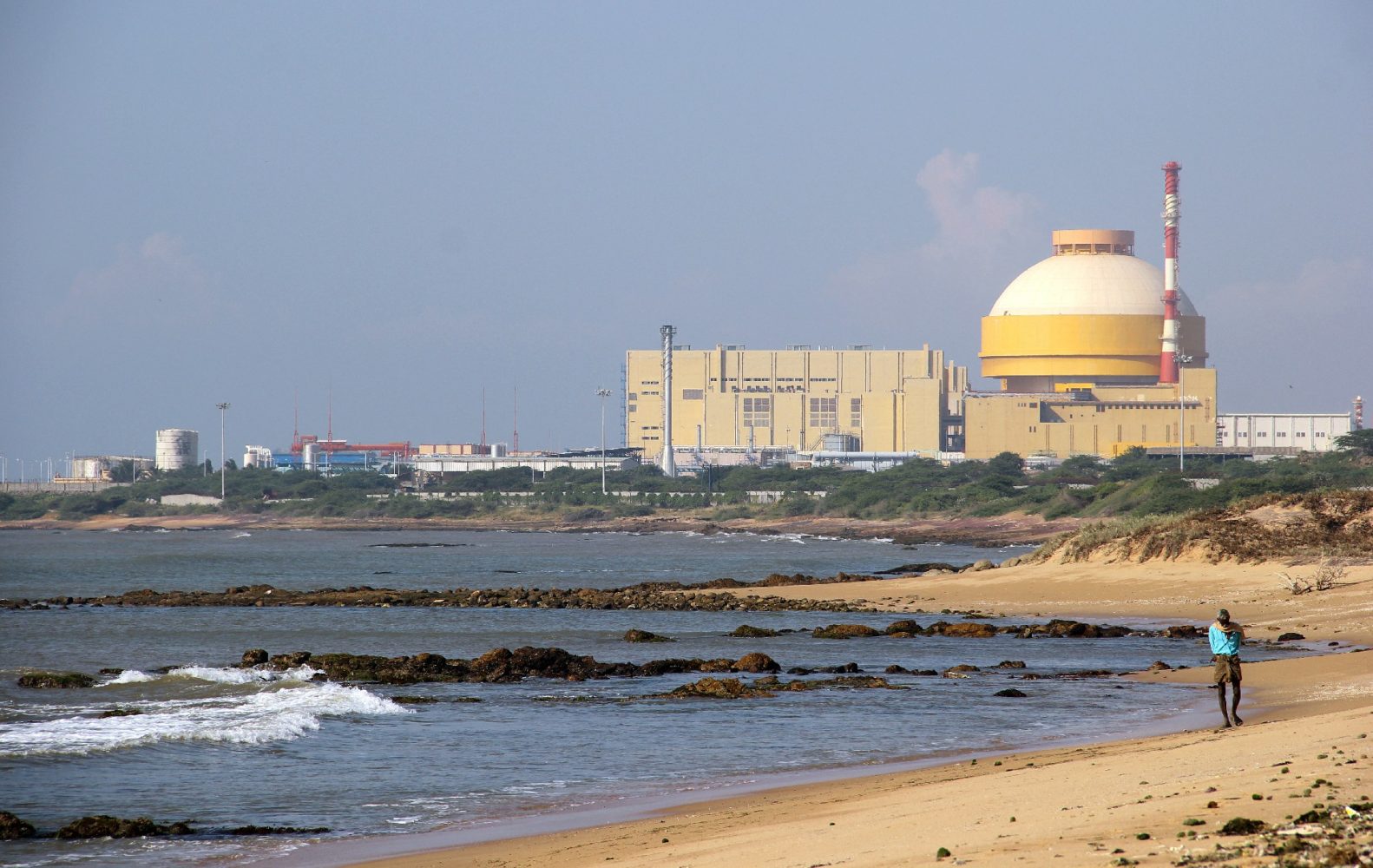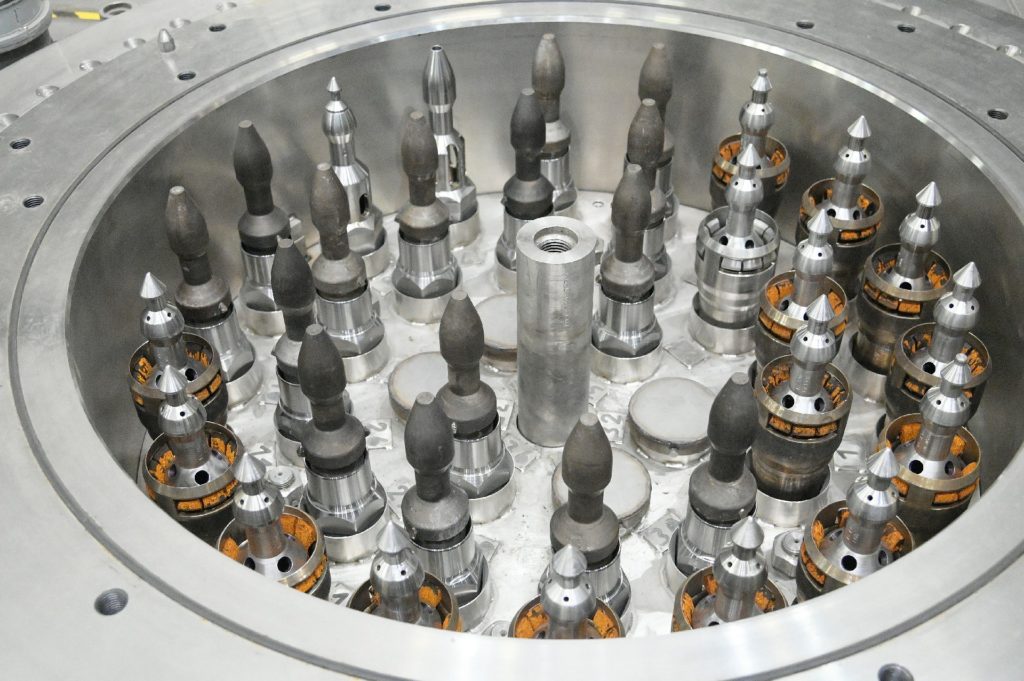
Upgraded Fuel
back to contentsIn July, three news stories were published about a number of nuclear fuel and fuel cycle upgrades that aim to improve the economics of power generation at Russian-designed nuclear power plants and to close the nuclear fuel cycle.
Fuel with minor actinides
The main news is that three fuel assemblies with minor actinides added to their fuel composition were for the first time ever loaded into the BN‑800 fast neutron reactor (installed at Unit 4 of the Beloyarsk Nuclear Power Plant). Minor actinides are the most radiotoxic elements contained in irradiated nuclear fuel, emitting most heat and having the longest half-life.
The fuel composition of the three experimental fuel assemblies is based on mixed uranium and plutonium oxide (MOX) fuel. BN‑800 has been operating on MOX fuel since September 2022. What makes the new assemblies different is the addition of americium‑241 and neptunium‑237. They were manufactured in late 2023 at the Mining and Chemical Plant (part of Rosatom’s fuel division TVEL) and passed factory acceptance tests. Their pilot operation is divided into three micro campaigns, totaling about a year and a half. The goal is to prove in practice the possibility of burning minor actinides on an industrial scale.
If this possibility is proved, radiation activity and toxicity of spent nuclear fuel will be reduced 2,300 times. “Rosatom’s MOX fuel with minor actinides for commercial fast reactors has no counterparts in the world and demonstrates the fundamental technological possibility of forging a critical, yet missing link for Generation IV nuclear power systems. By itself, uranium and plutonium fuel makes it possible to reprocess spent nuclear fuel into fresh fuel instead of storing it, thus reducing nuclear waste. In turn, burning minor actinides gives an opportunity to significantly reduce radioactivity of such waste. This will enable us in the future to abandon its complicated and expensive isolation in deep geological repositories,” explains Alexander Ugryumov, Senior Vice President for Research and Development at TVEL.

Rosatom is the world’s first company to be working on the links required to close the nuclear fuel cycle. This work is conducted under the Proryv (Breakthrough) project aimed at the development of Generation IV power systems, which involve fast neutron reactors and facilities for reprocessing irradiated fuel into fresh fuel. These facilities include a demonstration power production facility with the BREST-OD‑300 reactor and a new power unit with the BN‑1200M reactor to be built at the Beloyarsk Nuclear Power Plant.
Fuel in load-following mode
Rosatom researchers conducted a successful experiment to study the parameters of nuclear fuel designed for the 18‑month operation in VVER‑1200 reactors in the intraday load-following mode. Experimental fuel elements, both with and without a burnable absorber integrated into them, were loaded into the MIR research reactor. The test scenario simulated intraday load following: seven hours at 40 % power (night hours), four hours at 100 % (morning load), another four hours at 40 % (daytime decline), and then nine hours at 100 % (evening load). In-pile tests lasted 224 effective days, with 218 power ascension and descension cycles completed.
The experiment confirmed that the new fuel maintains its integrity and performance under repeated and rapid power changes. “This is another step towards demonstrating the feasibility of operating Russian-designed high-power reactors in load-following mode. Our research is attracting much interest from the operators of Russian-built nuclear power plants abroad,” says Alexander Ugryumov.
Operating nuclear reactors in load-following mode is important in those power systems that have a high share of nuclear or renewable capacity but have no or a low share of gas-fired or hydro power plants, which are usually used to address load changes in the power system.
18 months from day one
TVEL went ahead with delivering on the contract for the supply of nuclear fuel for India’s Kudankulam NPP Units 3 and 4. This fuel is designed for the 18‑month-long operation from the first load.
Previously, VVER‑1000 reactors, which are installed at Kudankulam, operated in a 12‑month refueling cycle. Since 2022, TVEL has been supplying TVS‑2M fuel assemblies for the first two units. They have a rigid design, a new-generation anti-debris filter and a higher uranium mass. Due to their higher reliability and uranium content, the reactors were switched to an 18‑month operation cycle. This reduced the number of days in downtime, thus increasing output and improving economics.
“Kudankulam Units 3 and 4, which are currently under construction by Rosatom, will be the first ever VVER‑1000 units to operate in an 18‑month refueling cycle from the start. This is the result of our successful cooperation in recent years. The solutions that have proved effective at similar power units in Russia and China will be implemented at Kudankulam’s reactors. Along with supplying nuclear fuel, Rosatom provides engineering services, improving the reactor economics through new fuel solutions,” says TVEL President Natalia Nikipelova.




